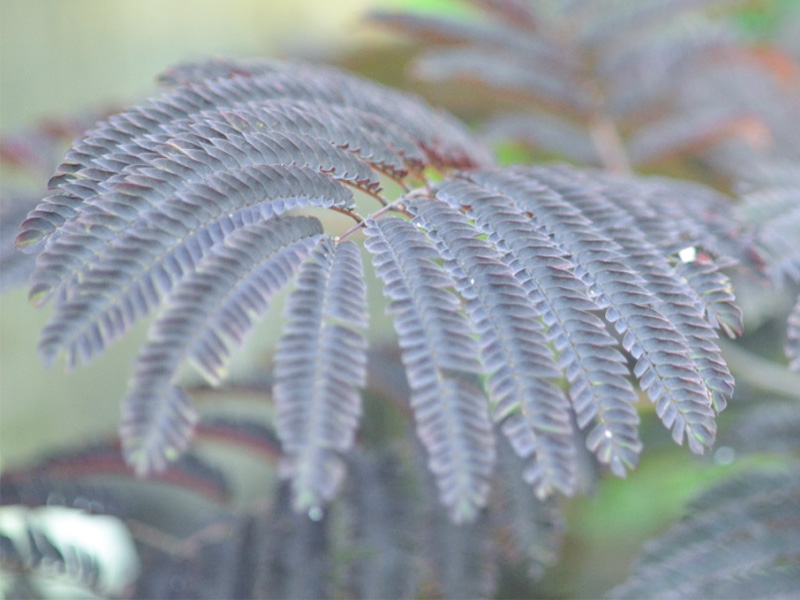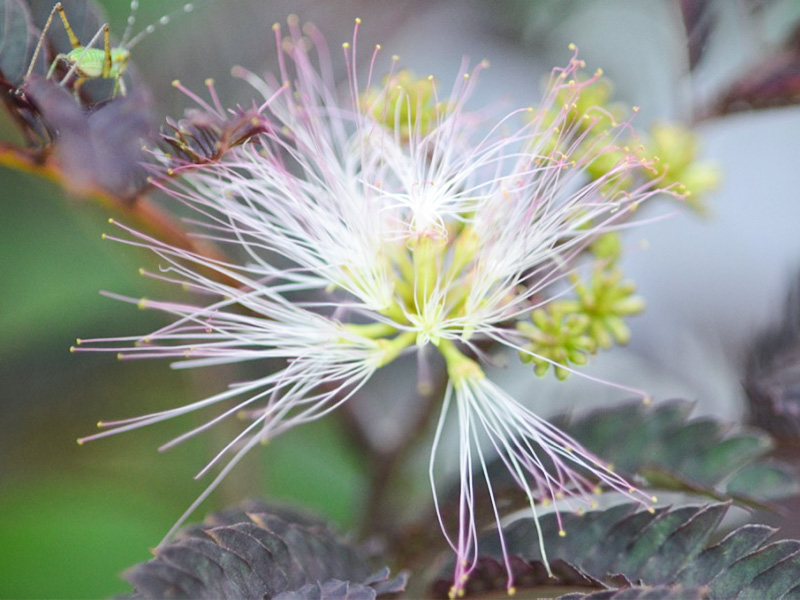
Woody > Albizia > Albizia Julibrissin > Albizia julibrissin 'Summer Chocolate'
Albizia Julibrissin
'Summer Chocolate'
Summer Chocolate Silk Tree; Summer Chocolate Mimosa Tree
Origin: Produced from a control planting in 1990 in Kawaguchi City, Japan and developed by Dr. Masato Yokoi.
| Family |
| Fabaceae |
| Genus |
| Albizia |
| Species |
| Julibrissin |
| Cultivar |
| 'Summer Chocolate' |
| Category |
| Woody |
| Type |
| Tree (deciduous) |
| USDA Hardiness Zone |
| 7b |
| Canadian Hardiness Zone |
| 7a |
| RHS Hardiness Zone |
| H3 |
| Temperature (°C) |
| -15 |
| Temperature (°F) |
| 5 |
| Height |
| 5 - 8 m |
| Spread |
| 5 - 8 m |
Photographs
Description and Growing Information
Flowering Period
| General Description |
| A medium to small tree with umbrella like appearance and a chocolate burgundy colour. |
| Landscape |
| Shade tree (due to its wide canopy) and specimen plant. |
| Cultivation |
| Full sun to partial shade. Prefers light clay, sandy loam and acidic to alkaline soils. Drought tolerant. |
| Shape |
| Vase-shape crown, when mature will produce an umbrella-like structure. |
| Growth |
| Fast |
| ID Characteristic |
| This tree has a very rich chocolate burgundy colour. The leafs are vary fern like in appearance and in mature trees they are usually as wide as they are tall. |
| Pests |
| Brown tail moth, Carnation tortrix, Vapourer, leopard, Buff tip, Hawthorn webber, Lackey, Goat, Silver Y, Winter, Small ermine and Angle shades moths. |
| Habitat |
| Horticultural origin. |
| Flower/Leaf Bud Description |
| Clustered buds which are small consisting of 5-petaled calyx with a corolla fused into a tube. |
| Leaf Description |
| Alternate leaf pattern, 18 - 20 cm wide and 30 cm long. The leaves are bipinnately compound and each leaf has around 40 - 60 leaflets. |
| Flower Description |
| Multi-head flowers each containing many stamens and a single pistil. The flower in the center of the cluster tends to be the largest. Having a pom-pom-like appearance. |
| Fruit Description |
| Large bean-like seed pods. |
| Colour Description |
| The bark is greyish-brown in colour. The leaflets are a bronze green when young and a chocolate burgundy colour when mature.. The flowers are a light pink colour. The buds are green and turn to a light brown when ripe. |
| Texture Description |
| The bark is smooth with some bumps. |
| Propagation |
| Semi-hardwood cuttings and bud grafting. |
| Ethnobotanical Uses (Disclaimer) |
| The species was commonly used in Chinese medicine and found to have a sedative-like and anti-depressant like reaction when studied on mice. |
References
McClenathan, W. (2011, August 1). It may not be a Hershey bar, but the view from under an Albizia Julibrissin can be just as sweet. Retrieved October 27, 2015.
Patent USPP13822 - Albizia julibrissin tree named 'Summer Chocolate'. (n.d.). Retrieved October 27, 2015.


